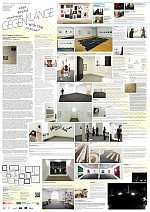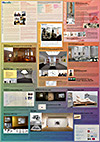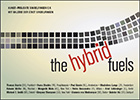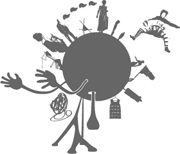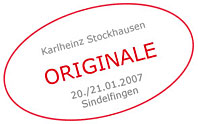|
K+P
Projects
 1site2places 1site2places
Plural Skulpture
Jochen Gerz 1997
App: 25 years KUNST+PROJEKTE Sindelfingen e. V.

Ruwen Wiegert:
Zeitkapsel - project
Zeitkapsel - press
Zeitkapsel - BOOK
K+P
Cooperations
Art Festival
Hohenkarpfen
750 pictures for Sindelfingen
using
Camera Obscura

Andreas Hauser, Goldsmith
|
2013
Within the Frame of Abstract Images
of the German Postwar Period
 GEGENKLÄNGE GEGENKLÄNGE
'counter-sounds'
when sound interferes with the visual
November 17, 2013 to Januar 12,2014
Curator: Ingrid Burgbacher-Krupka
Galerie der Stadt Sindelfingen
Marktplatz 1
71063 Sindelfingen
Tel. +49 (0) 7031 943 25
how to get there
Artists
Enrico Bach, Andreas Brand, Peter Breitenbach, Ingo Feuker, Karsten Födinger, Johannes Kreidler, Schirin Kretschmann, Christian Mayer, Smiljana Nikolic, Junya Oikawa, Luigi-Maria Rapisarda, Claudia de la Torre
Performances at the Opening
Junya Oikawa: Opening Act - Bell Strata2
2012 (7:55 min.)
Johannes Kreidler: „Diese Tulpe, von der ich spreche, und die ich, indem ich spreche, ersetze“.
2013 (16:05 min.)
voice and videoprojection with a musical diction.
Smiljana Nikolic, Gabi Schillig: Responsive Skin
2013 (6:10 min.)
organoid/architectural structure mixed with body-borne sound in a sound space.
//..Peter Breitenbach, Ron Freyenschlag, Smilijana Nikolic: Elecric performance IV
2013 (4:16 min.)
elektromagnetic fields, made audible by special microphons.
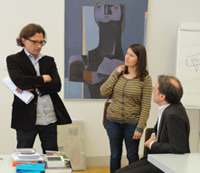
Gegenklänge
is a trans-disciplinary, multimedia exhibition / field research project of four cooperating artistic partners:
- KUNST+PROJEKTE Sindelfingen e.V.,
- Music Design, Trossingen University of Music with Furtwangen University,
- Kunststiftung Baden-Württemberg - Art Foundation of Baden-Württemberg,
- Galerie der Stadt Sindelfingen - City Gallery of Sindelfingen
In the historical rooms of the City Gallery of Sindelfingen, museum image incunabula of German art after 1945 encounter avant-garde sound art by the students of music design and installation art by the current prizewinners of the Kunststiftung (art foundation). All of the works by the young artists have been created specifically for the joint project and the rooms of the gallery with its particular spatial, visual, and acoustic characteristics. They stand for themselves alone with great expressive power but nonetheless simultaneously interpenetrate each other and open up in a way that transcends genres. After the turmoil of the Third Reich, the abstract incunabula of the postwar period: images, sculptures, objects—Informel, Tachistic, Concrete—stand exemplarily for the transition to a new democratic society.
Today in an era of electronic upheaval it is important for art institutions to be open to a globalized world. The ‘classical’ art gallery of the City of Sindelfingen, a building from the nineteen-eighties that was designed by Paul Kleihues and in which the history of the city and architectural modernity intertwine becomes a field for experimentation. The ‘white cube’ is broken open for new aesthetic experiences.
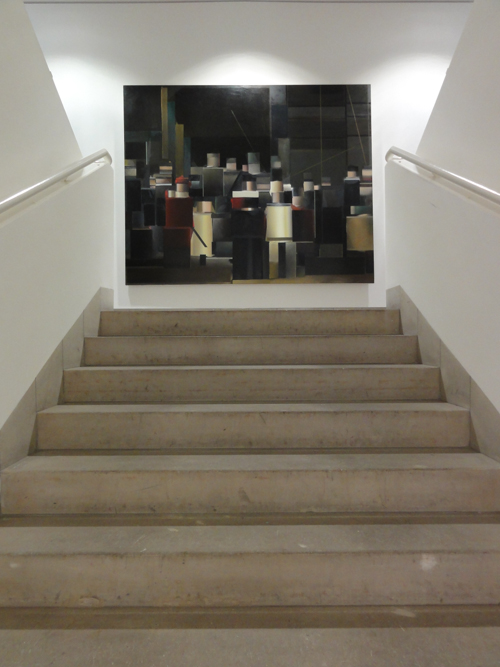
Enrico Bach: RNWRMX (Rembrandt Nachtwache REMIX), 2013
In the gallery, young artists from various areas of the Kunststiftung (Art Foundation of Baden-Württemberg) become accessible in the dialogue between their disciplines, while students of music design create their own utopian sound-art installations inspired by the art objects. They take up the zeitgeist of the previous period of transition in their concepts through designing new forms of expression with the help of current technological means and media and reflect its sociopolitical significance. The open spaces on site challenge the students to consciously design their acoustic effect within 'dissolved boundaries’ and to integrate interactive elements. Additional performances are planned for the opening during the Long Night of the Museum.
The project: “Gegenklänge” explores the effect of various disciplines in art (historical transition, sound art, installation art) on a traditional gallery concept in an experimental process. At the same time, it is an opportunity for young artists and students present themselves in a critical artistic environment. ibk
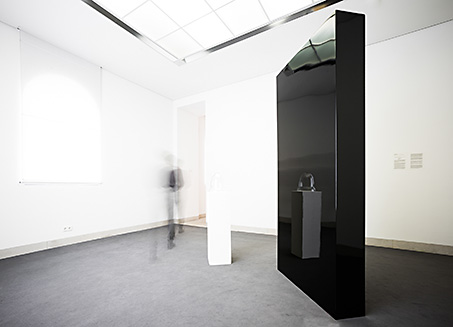
Smiljana Nikolic´: Silence like a Utopia


 
Generously supported by:
Sammlung Sigmund,
Stuttgart and 
   
|
|
2013
Within the Frame of Abstract Images
of the German Postwar Period
When today, in a world that is becoming small-scale, ‘art’ and the commercial handling of it are fueling the public’s awareness of art, and when art biennales and fairs are springing up around the world, and when in particular the painting of the twentieth century is highly prized, then a look back is worthwhile. Back to a generation of painters in a clearly delimited living environment, to a time when Germany, rising from the rubble after World War II, was striving to once again set upright the humanistic view of humankind, which had been knocked from its pedestal by the crimes of National Socialism.
And as chance would have it, a Frankfurter Allgemeine Zeitung newspaper page from 1955 now comes to light (rolled up as window insulation in a house built in 1955) with a review by the then British Vice-Consul and art critic John Anthony Thwaites: “German Abstract in Paris—An Exhibition of 35 Painters and Sculptors.” To everybody's amazement: German painters are on the path to abstraction. In Paris, the German painters show that they are positioned for postwar modernism, apparently also as its trailblazer in Germany. Afterward, the exhibition from Paris was presented in the Staatsgalerie Stuttgart and subsequently also shown in Düsseldorf.
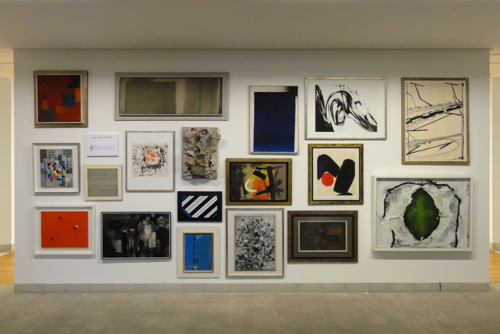
German Abstract - Informel
We have taken the exhibition of the German abstract painters in Paris in 1955 with the review of the British art critic John Anthony Thwaites (newspaper page in the exhibition) as the occasion for using images by the German painters of that notable exhibition in Paris as a ‘framework’ in our exhibition in 2013:
Gegenklänge · when sound interferes with the visual.
As a frame with a view of humankind inscribed in it, it sustained art in the years of transition after World War II, as the great art historian and contemporary witness Werner Haftmann (Der Mensch und seine Bilder, 1980) never tired of underscoring in essays and talks. This does not mean that only the abstract was being painted, but that abstract painting was emerging with a new awareness of the self / time.
When one reads the art-historical texts of that time today, the talks and essays of E.H. Gombrich, The Story of Art, 1950; Willi Baumeister, Das Unbekannte in der Kunst, 1947; Werner Haftmann, Malerei im 20. Jahrhundert, it is not only the images but also how they are perceived that make an impression. What was of interest was not characterizing styles and trends (as e.g. Clement Greenberg attempted to characterize ‘Abstract Expressionism’ in the United States conceptually after 1945 as a national status, while it is today favored in the art trade), but instead addressing the individual stance and artistic language of forms.
While in Paris, the postwar art metropolis in Europe, the new abstract art was seen as an existential force, in Germany it was nearly impossible for it to be mediated it in a neutral way. The confrontation between abstraction and figuration was extremely controversial: “abstraction is modernity, figuration National Socialist Breker-(Hitler) naturalism” (Willi Müller Hufschmid). In transcending an ideological reception of art, the establishment of the documenta in Germany in 1955 cannot be rated highly enough: in 1955, documenta I concluded the process of stocktaking and redress with an overview of the classical modern era of European painting. documenta II in 1959 was already dedicated to positions in art after 1945 and not only in Europe.
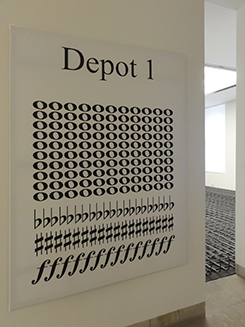 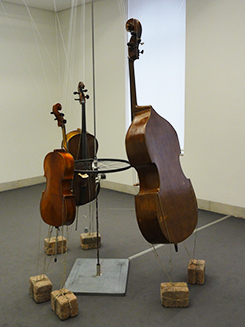
left: Johannes Kreidler: Depot 1 - Karsten Födinger: Angsteisen (back)
right: //..Peter Breitenbach: Computermusik für Streichtrio
The start of the second phase of abstract painting in Germany after World War II originated in the concept of art as unfettered self-expression of the artist, something that profoundly altered the nature of painting, in short, painters no longer ‘depicted,’ they ‘reacted’ and ‘acted.’ Seen in this way, their images are open. Open to the recording of spontaneous impulses, spiritual stimulation, open to the stimuli and temptations of the material and to transcending the traditional concept of the image through the broadening of its formal and spiritual dimensions. What was important was the concrete reality, the actuality of the finite and mortal ‘I’. When the individual makes the I of his or her existence the touchstone, then general (ideological) assertions regarding the nature of human beings shatter on the base of empiricism (here, the radicalism in the thinking of existential postwar Paris (Sartre) is shown).
Two painters who had been living in Paris since the nineteen-thirties had a major part in this development: Hans Hartung (1904–1989) and Wols (1913–1951).
The abstract painter Hans Hartung, a master of the line, “expressive gesture in the action without the aberration of motif . . . , making the line a bearer of power and movement without being bound to an object compliant to the rendering of spontaneous inner impulses, the image as psychogram, as gesture of expression, as transcription of a state of mind” (Paul Vogt). Hartung’s images of those years show “powerfully concentrated graphic symbols on darkly emotional colored grounds: bundles of lines, structures of stripes, interlacing and hesitations, assertions and negations, direct transcriptions from moments of existence as they are experienced. The image . . . a designed force field of an assertion of human essence. In its traces, a complete report on a dramatic experience of being was written” (Werner Haftmann). In 1960, Hartung received the Grand Prix for painting at the Venice Biennale.
Unlike Hartung, who sought equilibrium in the formal stringency of structure with the most unrestricted psychological élan, Wols (Alfred Otto Wolfgang Schulze) “burst open any grid of form and [understood] the painterly surface as a field of pure celebration and a resonance membrane for the lyrical or expressive inner movements in human beings” (Werner Haftmann). His images are a “rather meditative, subtle mesh of the finest strokes, emotional improvisations of great sensitivity and vulnerability” (Vogt). In art history, Wols is considered to be a progenitor of ‘Tachism’ (la tache—the stain).
The naturalized term ‘abstract’ was only able to apprehend the wealth of new forms of expression quite inadequately. The works of the artists exhibited in Paris were psychologically very different, without a unified orientation. Although it was still possible to perceive the academic tradition of prewar modernism in the older artists, et alai Willi Baumeister, Wilhelm Nay, Theodor Werner, and Fritz Winter, nevertheless, ultimately all of them, like Hartung and Wols, had crossed the border to the ‘Informel.’ As documented in the newspaper review, the great wonder in Paris was the fact that so many young artists had turned in experimentation to the abstract mode of expression (something that was unimaginable for the Federal President at that time Theodor Heuss, who considered ‘abstraction’ a temporary phenomenon and rejected it as dogma, see the exhibition: Heuss und die Kunst, Hohenkarpfen 2013). Even when they no longer depicted, what concerned these artists was finding new solutions “for what are called problems of ‘form’”, as the worldly art historian E.H. Gombrich called it, since what counts in art are new formal modes of expression, “‘form’ always comes first and the ‘subject’ second.” (Gombrich).
Artists deserving particular mention in Paris were: Theodor Werner, Max Ackermann, Willi Baumeister, Julius Bissier, Georg Meistermann, Rupprecht Geiger, Gerhard Fietz, Wilhelm Wessel, Wilhelm Nay, Emil Schumacher, Karl Otto Götz, KRH Sonderborg, Rolf Cavael, Heinz Trökes, Hann Trier, Otto Greis, Heinz Kreutz, Bernhard Schulze, Karl Brust.
What may not be absent in our framework construct is the Concrete, Constructivist orientation in Abstract Art, which hardly carried any weight in the exhibition in Paris although, as its advocate Paul Vogt writes, it offered stability in the turbulent postwar period: “as an expression of rational logic in contrast to expressive passion, as a symbol of cool order and dispassionate reason in contrast to an anarchic emotional state, as a stringent law in contrast to happy coincidence: absolute measure compared with absolute freedom.” Concrete art also had its roots in prewar modernism in Europe, in a type of “painting that works with elementary, geometrically definable forms and a striving for harmonic proportions and numerical proportions” (Haftmann).
Its powerful further development in the nineteen-fifties had far-reaching effects, particularly also here in the southwest, on the design of our environment, and on architecture and product design. It is, therefore, not surprising that the art museum of Ingolstadt, the city of Audi, specialized in ‘Concrete Art,’ is at this time exhibiting the painter Erich Buchholz with his experiments with materials, and that the permanent collection of Daimler in Berlin is based on this form of expression. Its representatives in our exhibition: Adolf Fleischmann, Günter Frühtrunk, Otto Herbert Hajek, Friedrich Vordemberge-Gildewart, Willüller-Hufschmid, Heinrich Wildemann, Anton Stankowski, Siegfried Cremer, Lothar Quinte.
Since the galleries and museums only slowly first got back on their feet again, in order to better orient and organize joint exhibitions, young artists after the war joined forces in interest groups: junger westen, Recklinghausen 1948; Quadriga, Frankfurt 1952; Gruppe 53, 1952 Düsseldorf. From the last, the group Zero with Heinz Mack, Otto Piene, Günter Uecker, et al. took its beginnings, and it is also with it that we complete our framework construct.
In creating a high-quality frame for the art and sound installations of young artists today, we rely on loans via the collection of the gallery of the city. We greatly appreciate the constructive collaboration.ibk
|
|

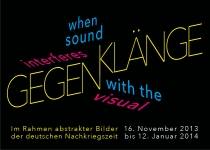 <Poster (pdf) Katalog>
<Poster (pdf) Katalog>